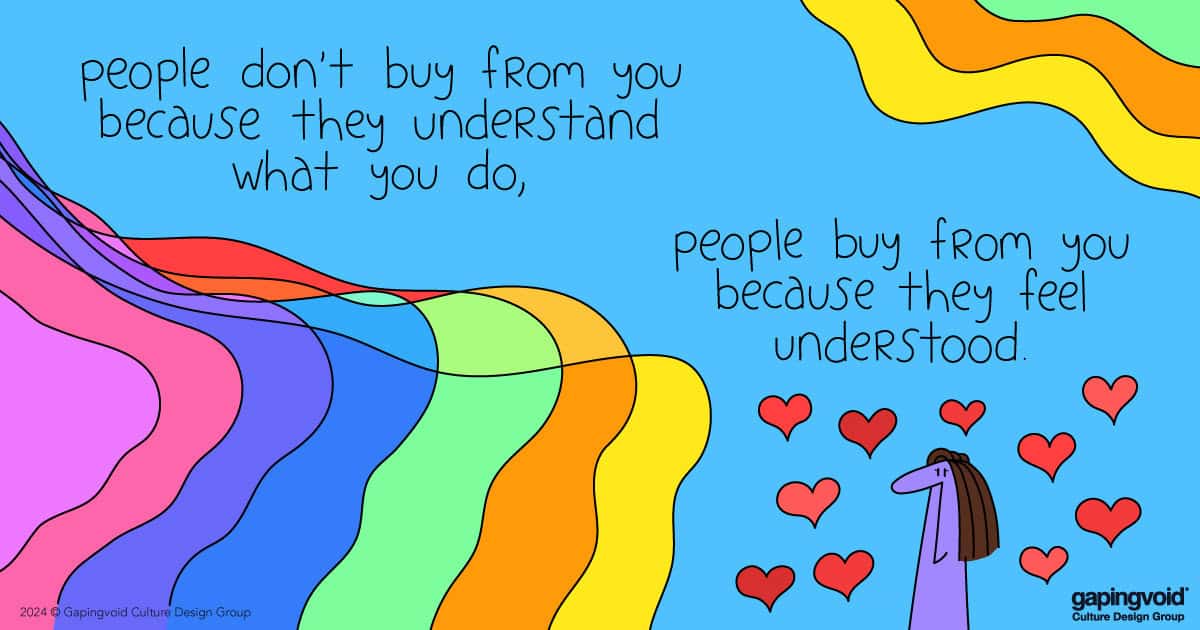
In 1971, Coca-Cola launched the most famous commercial in advertising history.
Older folks will still remember it fondly. Younger folks might remember it being used (subversively) in the very final scene of Mad Men.
The ad featured young people from different backgrounds, standing on a hill on a sunny day, each holding a Coke bottle in their hands, all singing the new upbeat Coke jingle in unison:
I’d like to teach the world to sing
In perfect harmony
I’d like to buy the world a Coke
And keep it company
That’s the real thing
There was no “Here’s why you should buy our product,” or “Here’s why we’re better than Pepsi.”
Just a lot of happy-happy-joy-joy, cut to aerial shot at the end to reveal that the crowd is in the shape of a heart. Even their new tagline, “It’s The Real Thing,” went left open-ended… Real? What do you mean by “Real”? Compared to what?
But that’s all it had to be. Because coke wasn’t selling carbonated sugar water. They were selling a feeling. A feeling of positivity and connection – an antidote to a lot of the negative Vietnam-era stuff people were used to seeing on TV at that time.
But the real ad’s genius wasn’t in what it said, but what it didn’t. It was deliberately designed so the viewer would project their own context onto it, not the other way around. It created a void and invited us to fill in our own meaning.
In doing so, they accidentally gave us a lesson in leadership. Leading people isn’t about figuring everything out in advance down to the last detail, and telling people what to do.
It’s about creating “context.” Asking the right questions, painting a picture of the possible, and then getting out of the way.
Coca-Cola didn’t tell us why their product was better. They showed us a world we wanted to be part of and left us to connect the dots.



